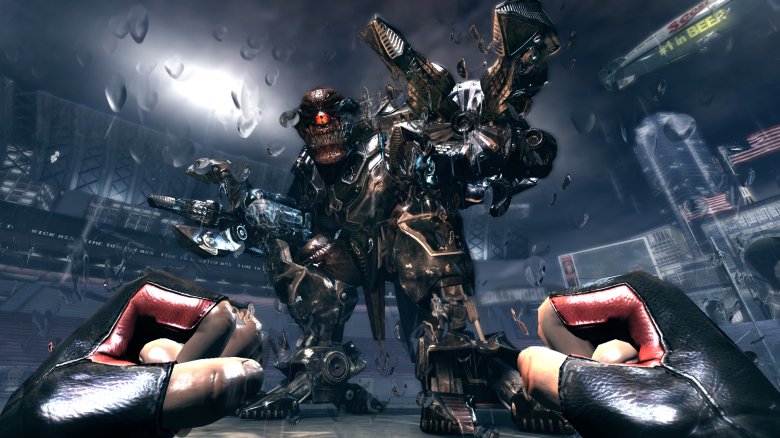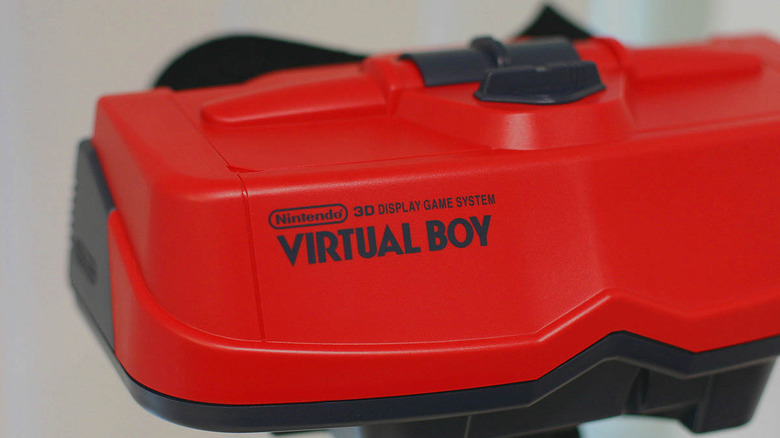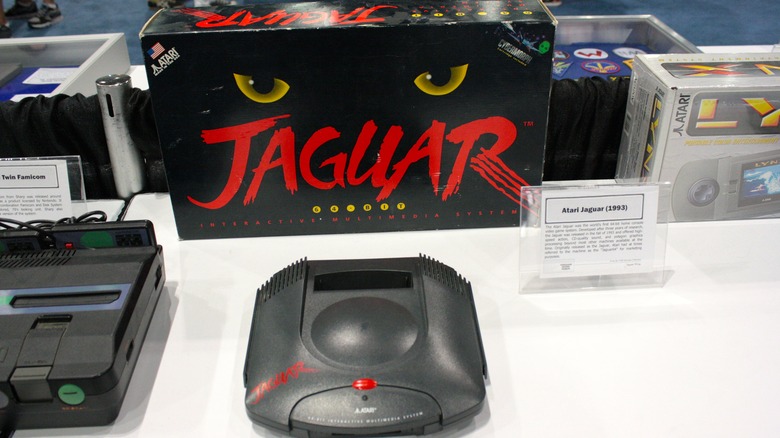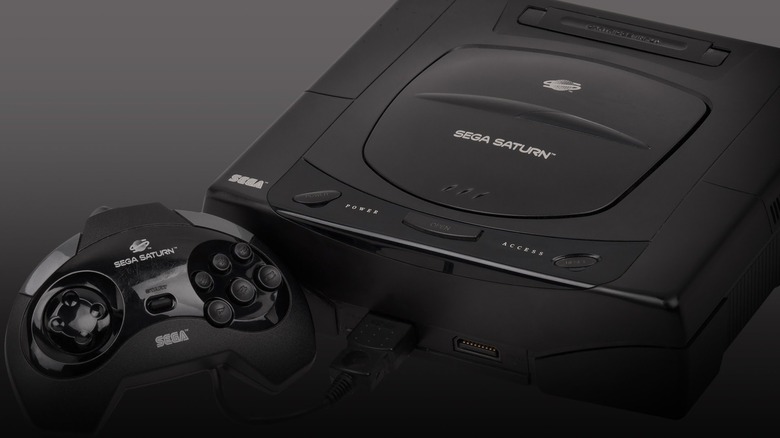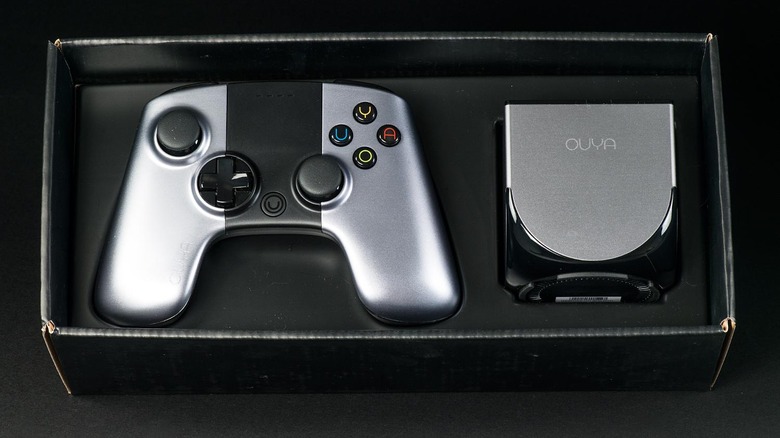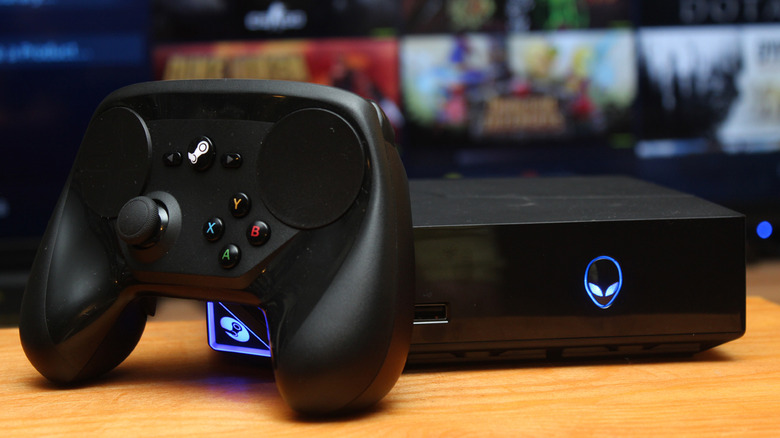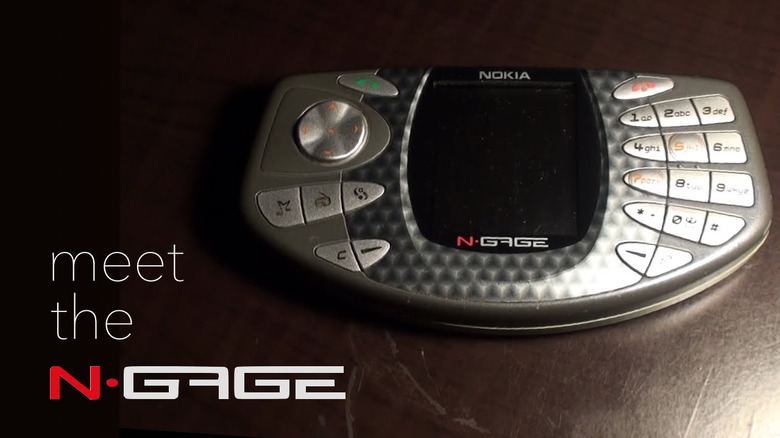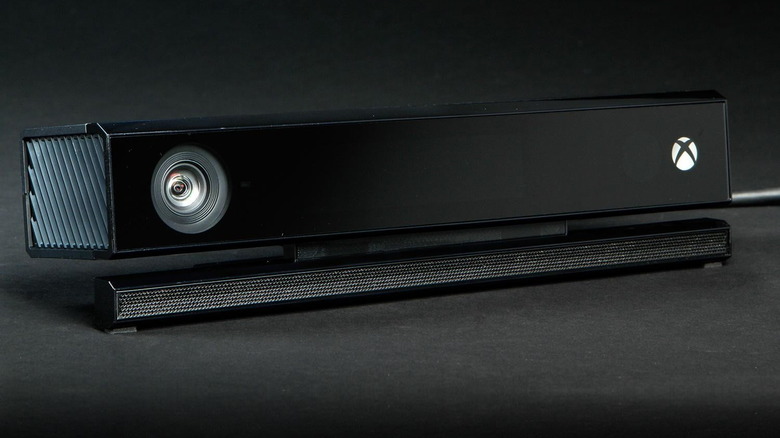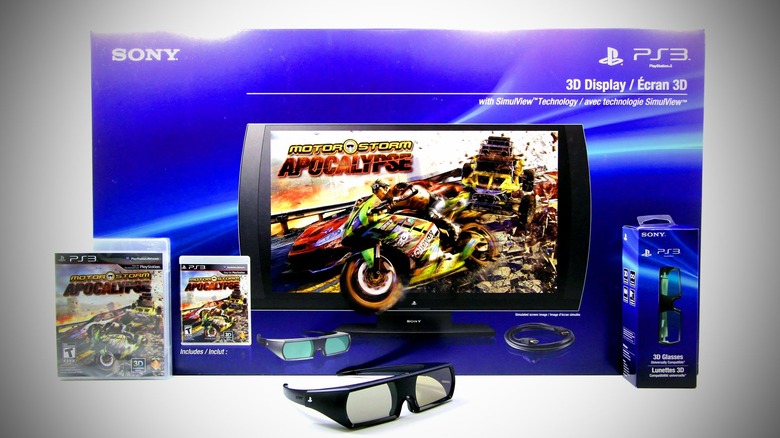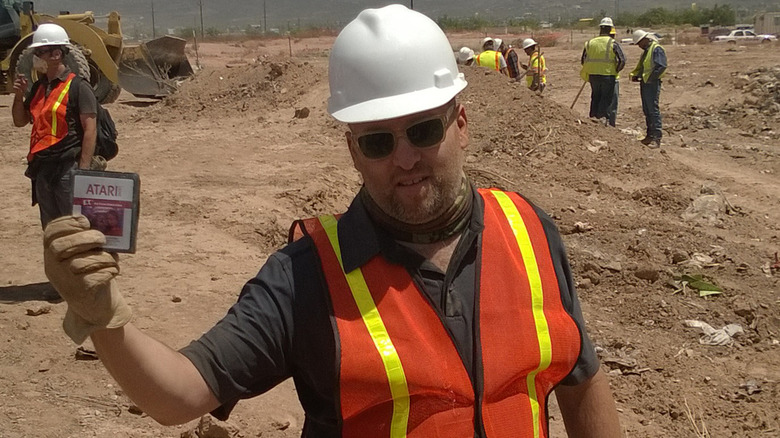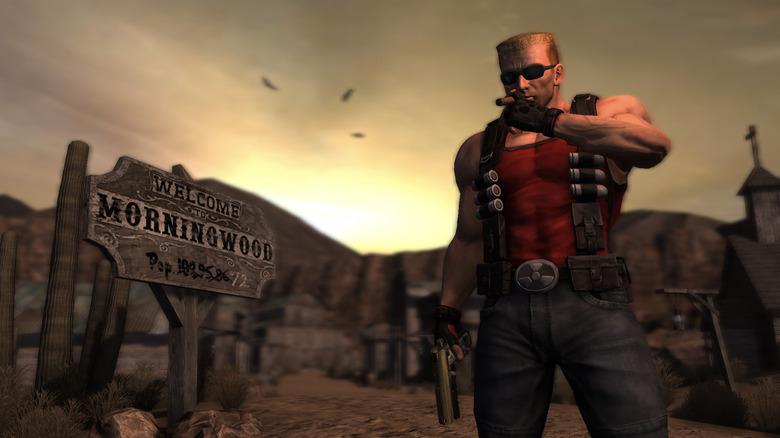Biggest Gaming Flops Of All Time
Video game history is littered with letdowns. Games and consoles that were way too hyped up and fell disappointingly short. A lot of these talked-up products are looked down upon because their bars were set way too high. They simply built up unrealistic expectations and didn't meet them. But not all of them were truly bad: just the victims of a constantly chugging hype train.
To put it more plainly: they weren't flops. Flops are a special breed.
Video game flops are straight-up failures. They're the consoles that barely register and leave no impact. They're the trends that not only fail to catch on, but never should have started in the first place. And they're games that suck so badly that they're either unplayable, no one wants to buy them, or both. They're the worst of what's ever happened in gaming, and shining examples of what companies shouldn't do if they want to succeed.
These are the biggest gaming flops of all time.
The Virtual Boy was a headache
Nintendo is known for its constant innovation in video games, and sometimes this innovation results in some wacky hardware. Who can forget the three-pronged Nintendo 64 controller design, the motion control Wiimotes of the Wii, or the GamePad of the Wii U? All of these examples, however, came after one of Nintendo's most interesting — and least successful — video game experiments. One that tried to offer a completely different gaming experience to consumers, and failed miserably in the process.
The Nintendo Virtual Boy.
The Virtual Boy was built around gaming in three dimensions, but despite a name that invoked the popular Game Boy brand, it was hardly a portable in the way one might expect. The hardware was capable of running on batteries, but it was bulky, and it required a tabletop so players could place their face into the headset. Those inconveniences aside, Nintendo hoped that the novelty of the experience would be worth it.
But even that fell short. The Virtual Boy only displayed two colors — black and red — and the 3D effect wasn't much to write home about. Not only that, Nintendo actively warned players against side effects like nausea and headaches. The Virtual Boy tanked. It was hard to advertise, didn't sell well, and wound up being killed after less than two years.
The Atari Jaguar went extinct
Atari has a long lineage in video games dating all the way back to the 1970s. In fact, one could argue the name Atari is just as synonymous with video games as the word Nintendo. But following the video game industry collapse of the early 1980s, Atari largely fell out of favor. The Nintendo Entertainment System became the de facto console, and Atari started looking for its next big hit.
The company thought it had that hit with the Jaguar console, released in 1993. It didn't.
The Jaguar certainly talked a big game. It touted itself as a 64-bit console in an era where 16-bit systems like the Super Nintendo and Sega Genesis reigned supreme. But those 64 bits didn't result in anything close to what Nintendo would later achieve with the Nintendo 64's graphics. Instead, the Jaguar's visuals were pretty much on par with the 16-bit systems, and the system was harder to develop for, too.
The Jaguar ended up being an enormous flop. It had some decent games, but a lot of bad ones. And soon, the system was smothered by the likes of the Sony PlayStation, Sega Saturn, and Nintendo 64. In a few short years, the console was dead, as were Atari's hopes of once again reclaiming the throne.
All of Sega's post-Genesis hardware bombed
"Genesis does what Nintendon't." If you're familiar with that phrase, you likely played video games in the early '90s, when the 16-bit console wars were at their most heated. Nintendo and Sega were battling for both market share and mindshare, and not only did that era produce some of the greatest video games of all time, but it was also the era in which Sega was at its best.
Unfortunately, Sega was never able to reach those heights again after the Genesis.
The company first released an add-on to the Sega Genesis, the 32X, in 1994. The device was meant to expand the Genesis's capabilities and enable it to play 32-bit games. But the hardware was poorly supported and fragmented the Genesis install base, and sales suffered as a result. Sega went back to the drawing board.
In 1995, Sega introduced the Sega Saturn, a disc-based, 32-bit platform. But that project was botched from the get-go after Sega chose a "surprise" launch for the Saturn at E3 in 1995. A few short months later, the PlayStation debuted and blew the Saturn out of the water, and Sega was once again left reeling.
Finally, Sega landed on something good: the Dreamcast, which launched in 1999. But it was too little, too late. Sega had burned through all of its goodwill, and gamers weren't interested. The Dreamcast was discontinued in 2001, and Sega officially exited the hardware business.
The Ouya revolution never came
The Ouya game console claimed it would upend the way video games were developed, sold, and played. And it made that promise known in its packaging, which included a plastic insert that read, "And so begins the revolution." But not every idea is meant to turn the world on its ear, even if that idea manages to raise nearly $9 million in Kickstarter funds. Sometimes, the mass market has to remind everyone who's in charge.
As a concept, the Ouya certainly had its merits. At only $100, the console was a path toward democratizing the video game ecosystem, allowing just about anyone to create and sell games that could be played on a television. And the system did its part to introduce some great new games into the world, serving as the very first console home for games like TowerFall and Broken Age. But the Ouya hardware itself was little more than an underpowered Android set-top box, and its controllers were janky when compared to the far better gamepads on the PlayStation 4 and Xbox One. Retail availability was scarce, system sales were slim, and as time went on, it was clear that the Ouya wasn't going to be a profitable endeavor for the team behind it.
Ouya eventually sold itself to Razer, ending the "revolution" before it could ever really get started.
Steam Machines ran out of, well, steam
Valve currently operates the largest PC video game marketplace in existence. It's called Steam, and it serves millions of gamers around the world. But something has always bothered the company — and its founder, Gabe Newell — about where most of its customers play. Valve sells mostly to Windows users, and there's always been a fear within the company that Microsoft could one day wall gamers off from third-party markets and force game purchases through its own store.
This fear led to Valve's Steam Machines initiative: an attempt to create PC hardware pre-installed with a Steam-centric version of Linux. It failed spectacularly.
To be fair, Steam Machines weren't a bust because of Steam itself. It was more the fault of Linux, an operating system that has never enjoyed as much PC game support as Windows. Purchasing a Steam Machine effectively meant that gamers had access to far less games, and that wasn't exactly a selling point. So rather than buy Steam Machines, PC gamers kept on doing what they'd always been doing: playing on Windows.
The Nokia N-gage failed to entice
Try as they might, no challenger has ever come close to dethroning Nintendo as the king of handheld gaming. Even when Sony brought a worthy challenger in the PSP, Nintendo responded by selling nearly twice as many Nintendo DS systems. It's almost a fact of life at this point: Nintendo owns the portable space.
But Nokia, a company long known for its mobile phones, decided to take a big swing at Nintendo by combining both a phone and handheld game system into one device. It was called the Nokia N-gage. And it was a prime example of what not to do when designing a portable game system.
The N-gage's first problem was that it couldn't commit to one side or the other. It played the middle ground in being both a phone and gaming device, and wound up doing neither particularly well. It was crappy to use as a phone, and the buttons didn't lend themselves well to games. On top of that, Nokia made some questionable design decisions — like having to remove the battery to change games, and having to hold the phone sideways to talk on it — that made the N-gage a laughing stock.
Needless to say, the N-gage didn't make a dent. The device was discontinued after a few years, and the handheld market went back to business as usual.
Kinect 2.0 waved goodbye
Microsoft's first version of the Kinect — launched for the Xbox 360 in 2010 — was a rousing success for Microsoft. It earned the title of "fastest-selling consumer electronics device" and legitimately looked like it would be a vital part of the Xbox ecosystem for years to come. But something happened when Microsoft revamped the Kinect for the Xbox One. The company managed to dissolve all of the goodwill it had earned the generation before and paint its newest console in the poorest light possible.
And a lot of that had to do with Kinect 2.0.
The Xbox 360's Kinect peripheral was optional. And it was a $150 accessory that came out years after the Xbox 360, which meant consumers didn't have to absorb the full package cost all at once. With the Xbox One, however, Microsoft chose to make the Kinect a mandatory item. That inclusion jacked the system's price up to $500 at launch, which was a full $100 more than the PlayStation 4. The Xbox One's price point hurt it, to the point where it was outsold two-to-one by its Sony counterpart in the eighth-generation console wars. And many laid the blame squarely at the feet of the Kinect.
Months after the Xbox One's launch, Microsoft unbundled the Kinect from the console and sold it separately. The device sat on the back burner from that point forward, eventually being discontinued a few years later.
Gaming on 3DTVs never came into focus
What would it be like to watch television in three dimensions? That was the question 3DTVs, along with 3D-capable media streams, aimed to answer. There was a big push for 3DTV back in the early 2010s, with several major media companies pushing to feature 3D content on their networks. TV manufacturers also stepped up their game in the 3D department to produce more compatible sets. It was also around that time that video game companies also took notice of gaming on 3DTVs, promising an even more immersive gameplay experience.
It didn't pan out.
Despite support from studios like Rocksteady, which included support for 3DTVs in Batman: Arkham City, and Sony, which produced a branded 3DTV display for gaming on its PlayStation 3 console, 3DTV gaming never took off. It was as much a dud as the displays themselves. In the end, the whole attempt was nothing more than a stab at trying to find the next big thing, only to find out that thing requires a huge investment from everyone involved.
3DTV itself went the way of the do-do, with media companies eventually phasing out their support for compatible content. And games? 3DTV-capable games will forever be a small blip in gaming's history.
E.T. was literal trash
There have been some really bad video games in the nearly half-century the industry has been alive. The ones that score a 1 or 2 out of 10 because they're so poorly designed, graphically atrocious and generally unappealing that reviewers barely want to play them for free, let alone buy them. Some might even call these games "trash" in the figurative sense, as though they're more akin to a discarded banana peel than a video game. But few games can lay claim to being literal trash on a large scale.
One game that can claim that honor is E.T. the Extra-Terrestrial.
E.T. was meant to be a hit. It followed the critically acclaimed film of the same name, and based on that, Atari had every expectation that the title would make bank. But the programmer on the project, Howard Scott Warshaw, was only given five weeks to start and complete the project. Even back in 1982, it was not enough time at all. But Warshaw did it anyway.
And the game was a disaster.
E.T. stunk. The game was an exercise in frustration, it sold poorly, and it became synonymous with the phrase "worst game ever." And Atari produced so many unsold copies that it eventually had to bury them in a New Mexico landfill — a fitting end to a garbage game.
Duke Nukem Forever spent forever in development ... and still sucked
But E.T. is not the definitive worst game of all time. At least, not according to those who also played Duke Nukem Forever. To those folks, the latest Duke either gives E.T. a run for its money, or owns the crown outright. And it's sad, because while earlier Duke Nukem games weren't exactly pinnacles in gaming excellence, they did what they did well: crude humor and action shooting. The franchise had fans, and they wanted an awfully long time for Duke Nukem Forever. Fifteen years, in fact.
It was not worth the wait.
The eternity that Duke Nukem Forever spent in development — a time that spanned multiple console generations — did the game no favors when it came to the design, gameplay, or the reviews that ultimately rolled in to render judgment. IGN said that Duke Nukem Forever looked "dated" when it released in 2011, calling it "a muddled, hypocritical exercise in irritation." And Destructoid laid into the game even more, saying that "the only thing consistent about Duke Nukem Forever is how tiresome it is." Not exactly high praise for a title that spent over a decade in production.
But that's Duke for you. He's great at talking a big game. In this instance, he didn't deliver.

